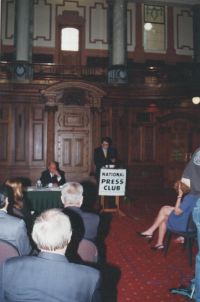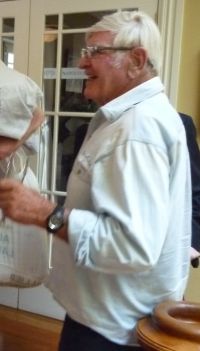Safety & Security
in Contrived News*
How serious are no-go areas in relation to their coverage by mainstream media?
They are all the more pervasive just because they have become an accepted as part of the scene. Therefore they do not stand out. They are not viewed as being unusual, or out of place.
Some examples?
The most worrying aspect of these no-go areas is that there are so many of them. Here’s one to start with. When it was officially disclosed that in New Zealand there were 40 people under surveillance by the security services, there should have been instigated by the media at the very least a debate on the nature and provenance of the individuals being watched.
You could say that the admission that in a sparsely populated nation that there were 40 people under surveillance was disturbing in itself?
It was a very candid admission and pretty much corresponds to a non-disclosed number of quite a few more. We have to assume these fall into the lesser security category of persons of interest.
This hardly constitutes a pattern of no-go areas?
If you want a very large-scale and set-piece no go area then you have to consider the Paris climate conference. It was treated with the type of hushed reverence that was once accorded royal events such as coronations. There was no disclosure of the immense and embarrassing tensions at the conference. Instead there was the old rote style of reporting in which the word “historic” was such a recurring feature. I would have liked to have known details, for example, of who was there from this country, and who was paying for them to be there?
Let’s have more examples to make still more visible this pattern?
This no-go syndrome is far too easily ascribed to the delicacies of political correctness and this is certainly an element in the toadying, conformist, correct and polite coverage of something like the Paris event. Timing is also a big part of this. For example earlier in 2015 the round of pay increases to politicians triggered immense and justified media ire. At the end of the year, when the mainstreamers were not watching, were distracted, the pay boosts went through and without a murmur.
What are these distractions?
The distractions are made up of pre-programmed and large scale events. Sport hardly surprisingly is the central one here. It is so much part of the mainstream wallpaper that news practitioners fail to notice it. For example you are watching the news on television which is mainly about sport. At the conclusion, the newsreader says “and now we have the sport” when all you have been watching has been about sport. This is hardly something new in the news?
This is hardly something new in the news?
It has become intensified because of the mainstreamers turning themselves inside out as they seek to hug popular culture in all its manifestations and this really is the heart of the matter. Its most obvious manifestation is the embracing of entertainment and sport.
You are always going on about market-forces and such like and isn’t this what we are talking about here?
Let me narrow this down. We are talking about news which is in fact contrived in that it is a pre-programmed event such as a ball game. One side must win. The other must lose. So the outcome also is 50 percent pre- programmed. It is very much pre-packaged and it is the news equivalent of bubble-wrapped pour-on instant convenience foods.
Some might say that you will soon recommend the return of classified advertising on the front page?
In this fingering of the dominance of pre-packaged and pre-programmed news I am in good company. Paul Henry for one (pictured speaking to the National Press Club in 2011). In his autobiography he relates how when he was working for the government television news, there was this intense focus on having the news crystallised as long as possible before it was presented.. When there was spontaneous news, actual news, it threw this pre-programmed contrived format into inconvenient disarray.
*Interview with National Press Club president Peter Isaac
















